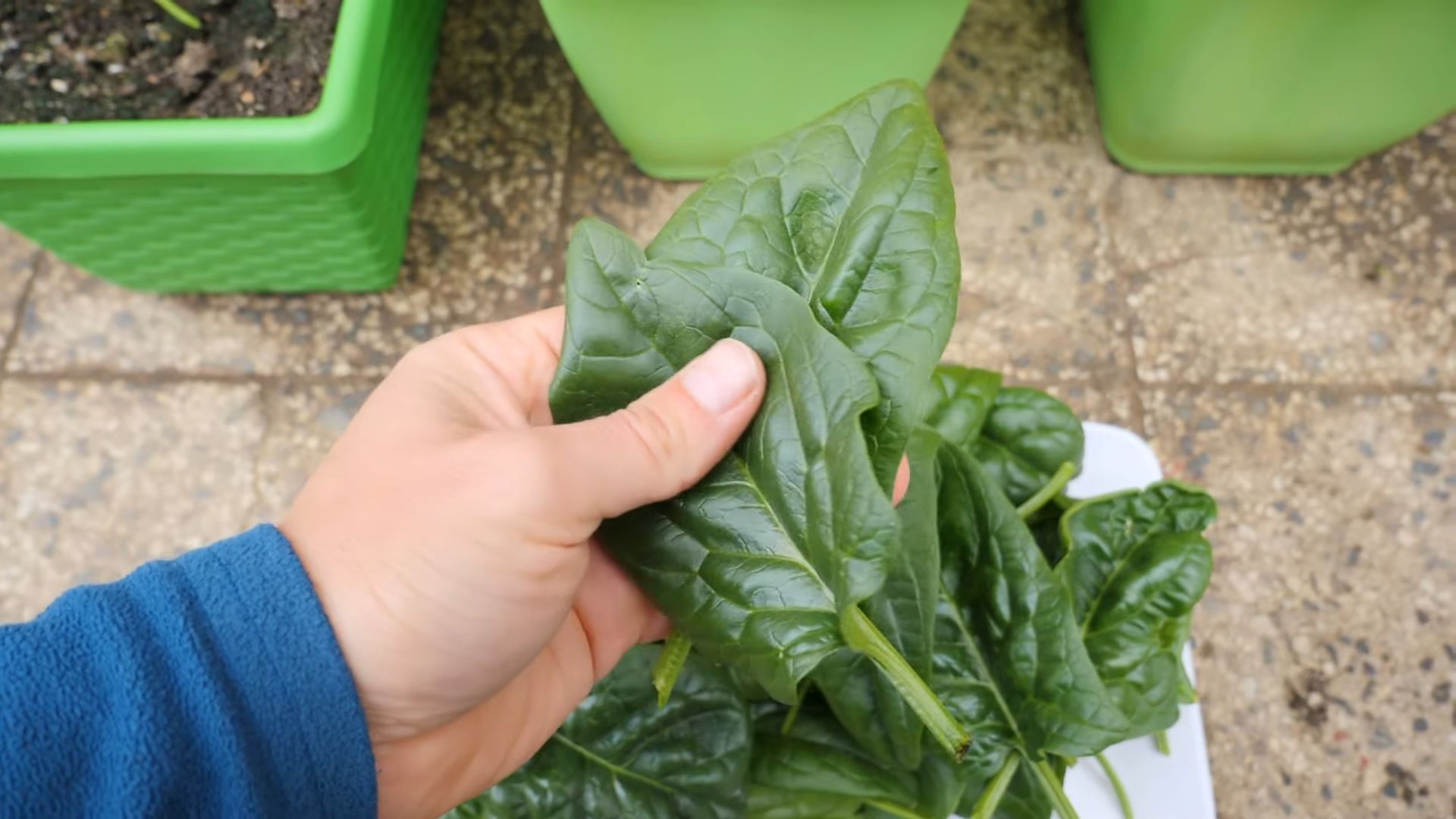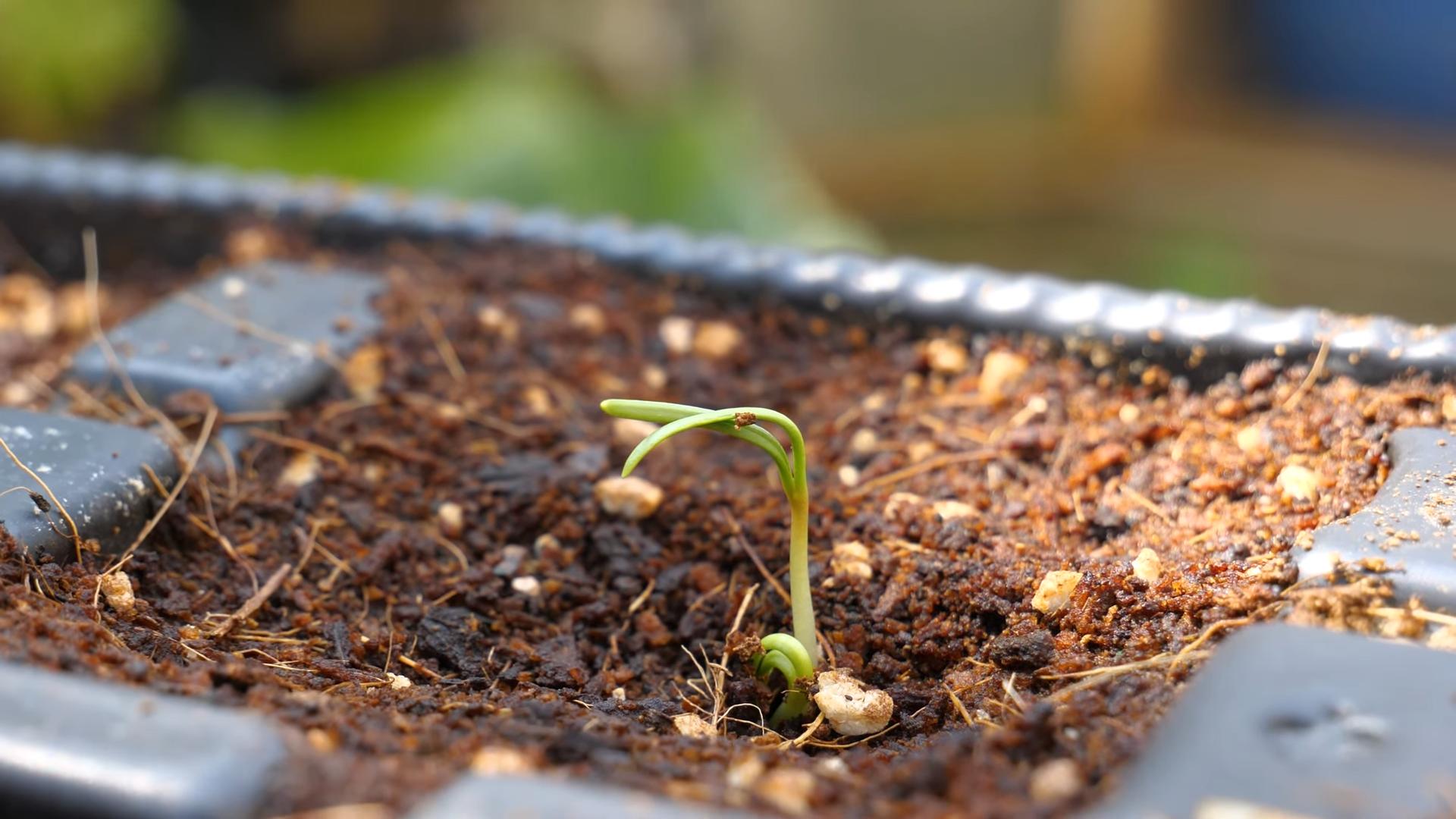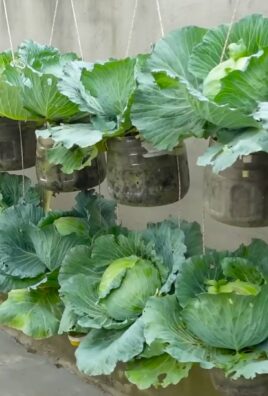Grow Spinach in a Pot? Absolutely! Imagine stepping onto your balcony or into your garden and harvesting fresh, vibrant spinach leaves for your salad, smoothie, or stir-fry. No sprawling garden needed! For centuries, cultivating food close to home has been a cornerstone of self-sufficiency and a connection to nature. From ancient Roman window boxes overflowing with herbs to the victory gardens of wartime, growing your own food, even in a small space, has always been empowering.
But let’s face it, not everyone has acres of land or the time for extensive gardening. That’s where the magic of container gardening comes in! And that’s why I’m so excited to share this simple, yet effective DIY guide on how to grow spinach in a pot. It’s easier than you think, and the rewards are incredibly delicious. You’ll not only enjoy fresh, organic spinach, but you’ll also experience the satisfaction of nurturing something from seed to table. Plus, it’s a fantastic way to add a touch of green to your living space. So, ditch the store-bought spinach and let’s get our hands dirty!

Grow Your Own Spinach Oasis: A Beginner’s Guide to Pot-Grown Goodness
Hey there, fellow plant enthusiasts! Ever dreamt of snipping fresh, vibrant spinach leaves right from your own balcony or patio? Well, dream no more! Growing spinach in pots is surprisingly easy, even if you’re a complete newbie. I’m going to walk you through every step, from choosing the right pot to harvesting your leafy bounty. Get ready to enjoy delicious, homegrown spinach in no time!
Choosing the Right Pot and Soil
Before we even think about seeds, let’s talk about the foundation of our spinach success: the pot and the soil.
* Pot Size Matters: Spinach needs room for its roots to spread. I recommend a pot that’s at least 6-8 inches deep and wide. A 12-inch pot is even better, especially if you plan on growing multiple plants. Remember, crowded plants are unhappy plants!
* Drainage is Key: Spinach hates soggy feet! Make sure your pot has drainage holes. If it doesn’t, you can drill some yourself (carefully, of course!).
* Pot Material: Plastic, terracotta, ceramic 鈥?the choice is yours! Terracotta pots dry out faster, which can be a plus in humid climates. Plastic pots retain moisture better, which might be preferable in drier areas.
* Soil Selection: Don’t just grab any old dirt from your backyard! Spinach thrives in well-draining, nutrient-rich soil. I highly recommend using a good quality potting mix specifically formulated for vegetables. You can also amend regular potting mix with compost or aged manure for an extra boost of nutrients. Avoid using garden soil directly in pots, as it tends to compact and doesn’t drain well.
Planting Your Spinach Seeds
Alright, now for the fun part 鈥?planting those tiny seeds that will transform into delicious spinach!
1. Timing is Everything: Spinach is a cool-season crop, meaning it prefers cooler temperatures. The best time to plant spinach is in early spring or early fall. In warmer climates, you can even grow it during the winter months. Check your local climate for the best planting times. If you plant during the heat of summer, the spinach will bolt (go to seed) quickly, and the leaves will become bitter.
2. Prepare the Soil: Fill your pot with the potting mix, leaving about an inch of space at the top. Gently pat the soil down to remove any large air pockets.
3. Sow the Seeds: Spinach seeds are small, so handle them carefully. I like to sprinkle the seeds evenly over the surface of the soil. Aim for about 2-3 seeds per inch.
4. Cover the Seeds: Lightly cover the seeds with about 陆 inch of soil. You can use your fingers or a small trowel.
5. Water Gently: Water the soil gently using a watering can or a spray bottle. Avoid blasting the seeds with a strong stream of water, as this can dislodge them. The goal is to moisten the soil without disturbing the seeds.
6. Label Your Pot: Trust me, you’ll thank yourself later! Label your pot with the date you planted the seeds and the type of spinach you’re growing. This will help you keep track of your progress.
7. Find the Right Spot: Place your pot in a location that receives at least 4-6 hours of sunlight per day. Spinach can tolerate some shade, especially in warmer climates, but it needs adequate sunlight to thrive.
Caring for Your Spinach Plants
Once your spinach seeds have sprouted, it’s time to nurture them into healthy, productive plants.
1. Watering: Spinach needs consistent moisture, but it doesn’t like to be waterlogged. Water your plants when the top inch of soil feels dry to the touch. Avoid overwatering, as this can lead to root rot. I usually check the soil moisture every day or two, especially during hot weather.
2. Thinning: Once your spinach seedlings have a few true leaves (the leaves that appear after the initial seed leaves), it’s time to thin them out. This means removing some of the seedlings to give the remaining plants more room to grow. Choose the strongest, healthiest-looking seedlings and snip off the weaker ones at the soil line. Don’t pull them out, as this can disturb the roots of the remaining plants. Aim for a spacing of about 2-3 inches between plants.
3. Fertilizing: Spinach is a heavy feeder, meaning it needs plenty of nutrients to grow well. I recommend fertilizing your spinach plants every 2-3 weeks with a balanced liquid fertilizer. Follow the instructions on the fertilizer label carefully. You can also use organic fertilizers like compost tea or fish emulsion.
4. Weeding: Keep your pot free of weeds, as they can compete with your spinach plants for nutrients and water. Gently pull out any weeds that appear, being careful not to disturb the spinach roots.
5. Pest Control: Spinach is generally pest-resistant, but it can sometimes be affected by aphids, slugs, or snails. Check your plants regularly for signs of pests. If you find any, you can try spraying them with insecticidal soap or neem oil. You can also handpick slugs and snails off your plants.
6. Bolting Prevention: As I mentioned earlier, spinach tends to bolt (go to seed) in hot weather. To prevent bolting, try to plant your spinach in a location that receives some afternoon shade. You can also use shade cloth to protect your plants from the intense sun. Make sure to harvest your spinach regularly, as this can also help prevent bolting.
Harvesting Your Spinach
The moment you’ve been waiting for 鈥?harvesting your delicious, homegrown spinach!
1. When to Harvest: You can start harvesting spinach leaves when they are about 4-6 inches long. The younger leaves are more tender and flavorful.
2. How to Harvest: Use a pair of scissors or garden shears to cut the outer leaves of the plant, leaving the inner leaves to continue growing. This is known as “cut and come again” harvesting, and it allows you to harvest spinach from the same plant multiple times.
3. Harvest Regularly: Harvest your spinach regularly to encourage continued growth and prevent bolting.
4. Storage: Freshly harvested spinach is best used immediately. However, you can store it in the refrigerator for up to a week. To store spinach, wash it thoroughly and pat it dry. Then, wrap it in a paper towel and place it in a plastic bag.
Troubleshooting Common Spinach Problems
Even with the best care, you might encounter a few challenges along the way. Here are some common spinach problems and how to address them:
* Yellowing Leaves: This can be a sign of nutrient deficiency. Try fertilizing your plants with a balanced liquid fertilizer.
* Slow Growth: This could be due to insufficient sunlight, poor soil, or lack of water. Make sure your plants are getting enough sunlight, water, and nutrients.
* Bolting: As mentioned earlier, bolting is caused by hot weather. Try to plant your spinach in a location that receives some afternoon shade, and harvest it regularly.
* Pest Infestations: Check your plants regularly for signs of pests and take action promptly.
Spinach Varieties to Consider
There are many different varieties of spinach to choose from, each with its own unique characteristics. Here are a few popular options:
* Bloomsdale Long Standing: A classic variety known for its dark green, crinkled leaves. It’s slow to bolt and produces a high yield.
* Tyee: A smooth-leafed variety that’s resistant to downy mildew. It’s a good choice for warmer climates.
* Space: Another smooth-leafed variety that’s known for its fast growth and high yield.
* Red Cardinal: A beautiful variety with red-veined leaves. It’s a great addition to salads and other dishes.
Enjoying Your Homegrown Spinach
Now that you’ve successfully grown your own spinach, it’s time to enjoy the fruits (or rather, leaves!) of your labor. Here are a few ideas:
* Salads: Fresh spinach is a delicious addition to any salad.
* Smoothies: Add a handful of spinach to your favorite smoothie for a boost of nutrients.
* Saut茅ed Spinach: Saut茅 spinach with garlic and olive oil for a simple and healthy side dish.
* Spinach Dip: Use your homegrown spinach to make a creamy and delicious spinach dip.
* Omelets and Frittatas: Add spinach to omelets and frittatas for a nutritious and flavorful breakfast.
Growing spinach in pots is a rewarding experience that allows you to enjoy fresh, healthy greens right at your fingertips. With a little bit of care and attention, you can create your own spinach oasis and impress your friends and family with your gardening skills. Happy growing!

Conclusion
So, there you have it! Growing spinach in a pot is not only achievable, but it’s also a remarkably rewarding experience. Forget those limp, pre-packaged greens from the grocery store. Imagine stepping out onto your balcony or patio and harvesting fresh, vibrant spinach leaves whenever you need them. The taste difference alone is enough to convince anyone to give this a try. The slightly earthy, subtly sweet flavor of homegrown spinach is simply unmatched.
But the benefits extend far beyond just taste. By growing your own spinach, you have complete control over the growing process. You know exactly what’s going into your food 鈥?no harsh pesticides or questionable chemicals. This is especially important for those of us who are conscious about our health and the environment. Plus, it’s a fantastic way to reduce your carbon footprint by cutting down on transportation and packaging waste.
This DIY trick is a must-try because it’s accessible to everyone, regardless of their gardening experience or the size of their living space. Whether you have a sprawling backyard or a tiny apartment balcony, you can successfully grow spinach in a pot. It’s a low-maintenance project that yields high returns in terms of fresh produce and personal satisfaction.
Looking for variations? Consider experimenting with different types of spinach. There’s smooth-leaf spinach, savoy spinach with its crinkled leaves, and semi-savoy spinach, which offers a balance between the two. Each variety has its own unique texture and flavor profile, so you can find the one that best suits your taste. You can also try companion planting. Marigolds, for example, can help deter pests, while basil can improve the flavor of your spinach.
Don’t be afraid to get creative with your container selection, too. While a standard plastic pot works perfectly well, you can also use repurposed containers like old buckets, laundry baskets (with drainage holes, of course!), or even a stack of tires. The key is to ensure that the container is large enough to accommodate the spinach plants and that it has adequate drainage.
We wholeheartedly encourage you to try this DIY trick and experience the joy of growing your own spinach. It’s a simple, sustainable, and incredibly satisfying way to add fresh, healthy greens to your diet. And most importantly, it’s fun!
Once you’ve harvested your first batch of homegrown spinach, we’d love to hear about your experience. Share your photos, tips, and tricks in the comments section below. Let’s build a community of spinach-growing enthusiasts and inspire others to embrace the joys of urban gardening. What are you waiting for? Get planting! This method of growing spinach in a pot is a game changer.
Frequently Asked Questions (FAQ)
What is the best type of pot to use for growing spinach?
The ideal pot for growing spinach should be at least 6-8 inches deep and wide. This provides enough space for the roots to develop properly. Material-wise, plastic, terracotta, or even repurposed containers like buckets or laundry baskets (with drainage holes) work well. Ensure the pot has good drainage to prevent waterlogging, which can lead to root rot. Dark-colored pots can heat up quickly in direct sunlight, so consider lighter colors or placing the pot in a shaded area during the hottest part of the day.
How often should I water my potted spinach?
Spinach needs consistent moisture to thrive. Water your spinach plants whenever the top inch of soil feels dry to the touch. During hot weather, you may need to water them daily, while in cooler weather, you can water them every few days. Avoid overwatering, as this can lead to root rot. A good rule of thumb is to water deeply until you see water draining from the bottom of the pot.
What kind of soil is best for growing spinach in a pot?
Spinach prefers well-draining, fertile soil with a pH between 6.0 and 7.0. A good potting mix specifically formulated for vegetables is ideal. You can also create your own mix by combining equal parts of compost, peat moss (or coconut coir), and perlite or vermiculite. Compost provides essential nutrients, peat moss (or coconut coir) helps retain moisture, and perlite or vermiculite improves drainage.
How much sunlight does spinach need?
Spinach needs at least 4-6 hours of sunlight per day. However, in hot climates, it’s best to provide some afternoon shade to prevent the leaves from wilting or bolting (going to seed prematurely). A location that receives morning sun and afternoon shade is ideal. If you’re growing spinach indoors, you may need to supplement with grow lights to ensure they receive enough light.
When is the best time to plant spinach?
Spinach is a cool-season crop, so the best time to plant it is in early spring or early fall. In areas with mild winters, you can even grow spinach throughout the winter. Avoid planting spinach during the hottest months of summer, as high temperatures can cause it to bolt.
How do I prevent spinach from bolting?
Bolting is when spinach plants prematurely produce flower stalks and seeds, which makes the leaves bitter and less palatable. To prevent bolting, choose bolt-resistant varieties, provide afternoon shade during hot weather, and ensure consistent watering. Harvesting the outer leaves regularly can also help delay bolting.
What are some common pests and diseases that affect spinach?
Common pests that affect spinach include aphids, spider mites, and leaf miners. You can control these pests by spraying the plants with insecticidal soap or neem oil. Diseases that can affect spinach include downy mildew and powdery mildew. To prevent these diseases, ensure good air circulation around the plants and avoid overhead watering. If you notice signs of disease, remove the affected leaves immediately.
How do I harvest spinach?
You can start harvesting spinach leaves when they are about 4-6 inches long. Simply snip off the outer leaves with scissors or a knife, leaving the inner leaves to continue growing. Harvesting regularly encourages the plant to produce more leaves.
Can I grow spinach indoors?
Yes, you can grow spinach indoors, especially during the winter months. Choose a sunny windowsill or use grow lights to provide adequate light. Ensure the pot has good drainage and use a well-draining potting mix. Monitor the plants for pests and diseases, and water them regularly.
How long does it take for spinach to grow?
Spinach typically takes about 4-6 weeks to mature from seed to harvest. However, the exact time will depend on the variety, growing conditions, and climate. You can start harvesting the outer leaves as soon as they are large enough, even if the plant hasn’t fully matured.





Leave a Comment